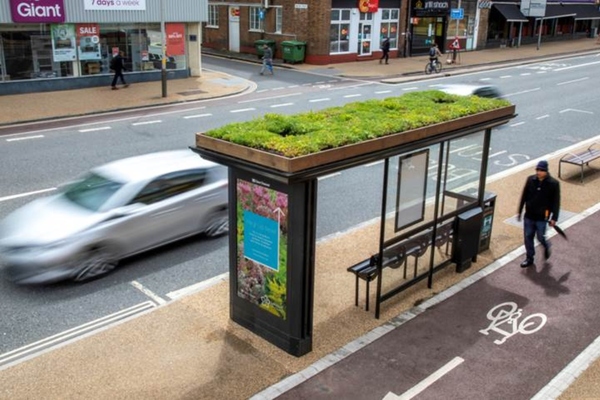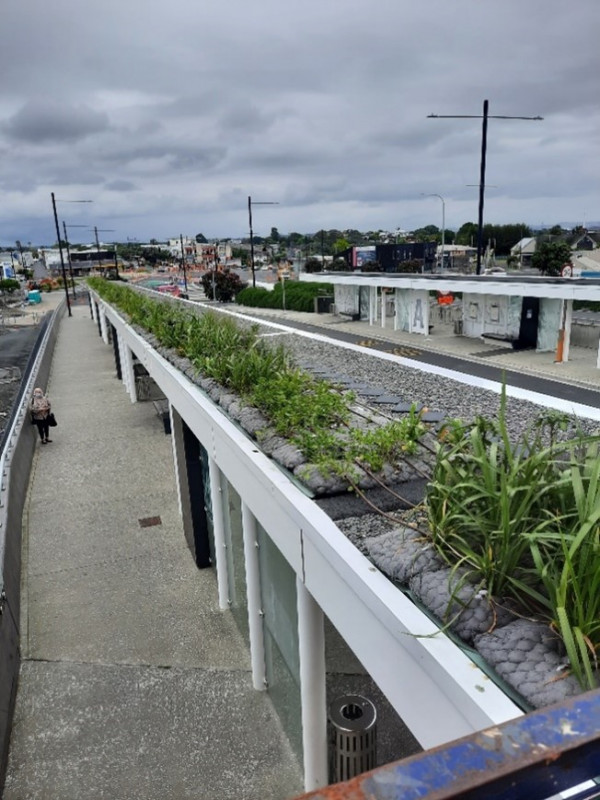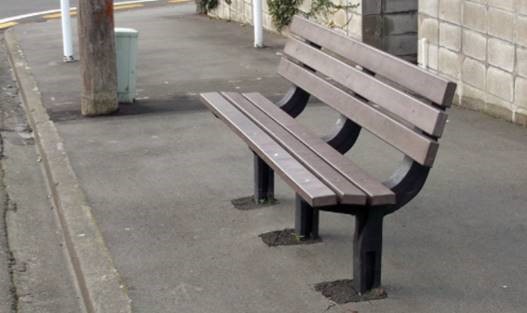The focus of this topic is bus stop design (which means the physical stop and associated infrastructure). The aim is more consistent, safer, more accessible and efficient bus stop planning and design. Well-designed bus stops meet a variety of customers’ needs and support safe and efficient bus operation. This topic is of great importance because most public transport trips in New Zealand are by bus, and buses are likely to remain the main form of passenger transport. Therefore, bus stops are most people’s first point of contact with the public transport system.
This guidance covers the planning and design of bus stops.
In simple terms, a bus stop is a space reserved for buses to load or unload passengers. It includes the space on the road in which the bus stops and the space in which passengers wait for, get on (board) and get off (disembark or alight) a bus, which then continues on its route. Therefore, a bus stop is a defined space on the roadway and footpath, representing the point of connection between pedestrian and bus. It also includes associated infrastructure such as shelters, seating, signage, poles or other related physical infrastructure.
When a bus stop sign is installed, it:
While bus stop design may seem simple, there are complex design details to consider in supporting the connection between pedestrian and bus in an accessible, safe and affordable manner.
Land Transport (Road User) Rule 2005, Clause 6.8(external link)
The section outlines the legislation that form the basis of this guidance on bus stop design.
Road to Zero 2020–2030, New Zealand’s road safety strategy, tells us all what we need to do to improve road safety. This strategy sets the country on a path to achieve Vision Zero – a New Zealand where no one is killed or seriously injured on the roads. The Road to Zero strategy sets an initial target to reduce deaths and serious injuries on New Zealand’s roads, streets, cycleways and footpaths by 40 percent over the 10 years to 2030 (from 2018 levels). Reaching that target would mean reducing annual road deaths to 227 and serious injuries to 1,680 by 2030. Improving safety on New Zealand roads is a Waka Kotahi priority, and this guidance is a part of our contribution to a safer transport network.
Road to Zero 2020–2030 (external link)
The bus stop design topic is relevant to four focus areas under Road to Zero:
We strongly recommended that an independent safety review is undertaken of both the network philosophy and detailed design of each bus stop location.
The guidelines reviewed in developing this Public Transport Design Guidance on bus stop design are listed below. Some guidance may offer readers additional useful information.
Auckland Transport:
Austroads guides(external link)
National Transport Authority (Ireland):
TransLink, Public Transport Infrastructure Manual (PTIM) 2015(external link)
Waka Kotahi NZ Transport Agency:
Note that a full Bus Stop Design Reference list is also provided here:
References
Sound ways exist to reduce environmental impact and promote sustainable outcomes in the design of bus stops.
Facilities supporting a public transport network should be designed to enhance and improve the local community. One enhancement should be to reduce negative environmental impacts, particularly when compared with private single-occupant cars that travel the same journey.
Areas of improvement can be in:
Consider attaching solar panels to bus stop shelters to power lighting or other powered hardware like security cameras or customer information systems. Locate solar panels to maximise solar exposure and minimise visual impact.
An extra benefit of solar shelters is the ability to take them ‘off grid’. They don’t require mains electricity, so invasive and time-consuming street works are not required.
Trees and shrubs can be planted to reduce the environmental impact of infrastructure and the built environment. This reduction is achieved by combining natural and built environments. Trees and shrubs can improve the amenity of the area and the waiting experience for passengers. However, consider the impact of such measures on inclusive access to the bus stop and corridor clearance.
Bus shelters offer an opportune surface for an attractive green space in the country’s concrete-dominated urban streets (see the examples in the figures below).
Living vegetation installed on the roof of a bus shelter (called a green or living roof) is in a prime position to filter pollution and particulates from transport exhausts.
Green bus shelters highlight the value of integrating sustainable design and green travel in attempts to address climate change and support biodiversity, particularly in densely populated urban areas.
When deliberating on using green roofs on bus shelters, consider the impact such measures may have on the shelter’s structure (for example, additional weight on the roof) and whether additional maintenance will be required (for example, watering). Consider selecting appropriate native plant species to help support local biodiversity and to minimise watering.

Green/living roof on a UK bus stop shelter. (Source: Clear Channel UK)


Green roof bus stop trials in Panmure, Auckland. (Source: Cathy Bebelman, Auckland Transport)
Opportunity charging for battery electric buses is most likely to be relevant at locations where buses may stop for longer periods (for example, bus layovers and interchanges).
For brief information about the location and placement of charging units, see:
PTDG: Bus layover and driver facilities
In the longer term, more comprehensive guidance about battery electric bus charging infrastructure will be released in the Public Transport Design Guidance website under the topic:
PTDG: Battery electric bus charging
When installing bus shelters, minimise environmental impact by considering both the embedded carbon associated with making the shelter and the likely asset life of the shelter. The shelter with the lowest environmental impact is one made of sustainable materials with a long life.
Emerging innovations may offer additional options for shelter material. At least one council has been approached by a supplier of 3D-printed bus shelters that would be equipped with solar panels, seating and space for art. Long-term, production of shelters by 3-D printing may offer a low-cost method of shelter production, enabling more widespread rollout of shelters and other favourable outcomes.
Street furniture can be made of recycled materials as depicted in the figure below.

Seat made from recycled plastic materials. (Source: Sarah Thorne)